 W
WThe World Wide Web (WWW), commonly known as the Web, is an information system where documents and other web resources are identified by Uniform Resource Locators, which may be interlinked by hyperlinks, and are accessible over the Internet. The resources of the Web are transferred via the Hypertext Transfer Protocol (HTTP), may be accessed by users by a software application called a web browser, and are published by a software application called a web server. The World Wide Web is not synonymous with the Internet, which pre-dated the Web in some form by over two decades and upon the technologies of which the Web is built.
 W
WClearnet is a term that typically refers to the publicly accessible Internet. Sometimes "clearnet" is used as a synonym for "surface web"—excluding both the darknet and the deep web. The World Wide Web is one of the most popular distributed services on the Internet, and the surface web is composed of the web pages and databases that are indexed by traditional search engines.
 W
WA favicon, also known as a shortcut icon, website icon, tab icon, URL icon, or bookmark icon, is a file containing one or more small icons, associated with a particular website or web page. A web designer can create such an icon and upload it to a website by several means, and graphical web browsers will then make use of it. Browsers that provide favicon support typically display a page's favicon in the browser's address bar and next to the page's name in a list of bookmarks. Browsers that support a tabbed document interface typically show a page's favicon next to the page's title on the tab, and site-specific browsers use the favicon as a desktop icon.
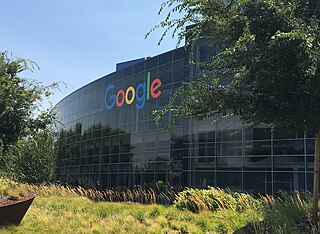 W
WGoogle LLC is an American multinational technology company that specializes in Internet-related services and products, which include online advertising technologies, a search engine, cloud computing, software, and hardware. It is considered one of the Big Five companies in the American information technology industry, along with Amazon, Meta, Apple, and Microsoft.
 W
WA guestbook is a paper or electronic means for a visitor to acknowledge a visit to a site, physical or web-based, and leave details such as their name, postal or electronic address and any comments. Such paper-based ledgers or books are traditional in churches, at weddings, funerals, B&Bs, museums, schools, institutions and other private facilities open to the public. Some private homes keep visitors' books. Specialised forms of guestbooks include hotel registers, wherein guests are required to provide their contact information, and Books of Condolence, which are used at funeral homes and more generally after notable public deaths, such as the death of a monarch or president, or after a public disaster, such as an airplane crash.
 W
WThe World Wide Web is a global information medium which users can access via computers connected to the Internet. The term is often mistakenly used as a synonym for the Internet itself, but the Web is a service that operates over the Internet, just as email and Usenet also do. The history of the Internet dates back significantly further than that of the World Wide Web.
 W
WIn computing, a hyperlink, or simply a link, is a reference to data that the user can follow by clicking or tapping. A hyperlink points to a whole document or to a specific element within a document. Hypertext is text with hyperlinks. The text that is linked from is called anchor text. A software system that is used for viewing and creating hypertext is a hypertext system, and to create a hyperlink is to hyperlink. A user following hyperlinks is said to navigate or browse the hypertext.
 W
WThe Hypertext Transfer Protocol (HTTP) is an application layer protocol in the Internet protocol suite model for distributed, collaborative, hypermedia information systems. HTTP is the foundation of data communication for the World Wide Web, where hypertext documents include hyperlinks to other resources that the user can easily access, for example by a mouse click or by tapping the screen in a web browser.
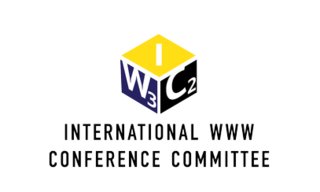 W
WThe International World Wide Web Conference Committee (abbreviated as IW3C2 also written as IW3C2) is a professional non-profit organization registered in Switzerland (Article 60ff of the Swiss Civil Code) that promotes World Wide Web research and development. The IW3C2 organizes and hosts the annual World Wide Web Conference in conjunction with the W3C.
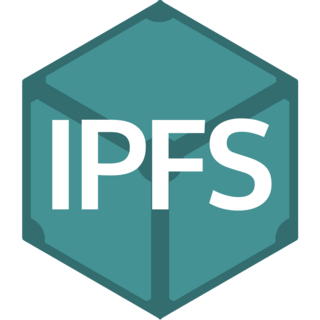 W
WThe InterPlanetary File System (IPFS) is a protocol and peer-to-peer network for storing and sharing data in a distributed file system. IPFS uses content-addressing to uniquely identify each file in a global namespace connecting all computing devices.
 W
WIs Google Making Us Stupid? What the Internet Is Doing to Our Brains! is a magazine article by technology writer Nicholas G. Carr, and is highly critical of the Internet's effect on cognition. It was published in the July/August 2008 edition of The Atlantic magazine as a six-page cover story. Carr's main argument is that the Internet might have detrimental effects on cognition that diminish the capacity for concentration and contemplation. Despite the title, the article is not specifically targeted at Google, but more at the cognitive impact of the Internet and World Wide Web. Carr expanded his argument in The Shallows: What the Internet Is Doing to Our Brains, a book published by W. W. Norton in June 2010.
 W
WIn computing, linked data is structured data which is interlinked with other data so it becomes more useful through semantic queries. It builds upon standard Web technologies such as HTTP, RDF and URIs, but rather than using them to serve web pages only for human readers, it extends them to share information in a way that can be read automatically by computers. Part of the vision of linked data is for the Internet to become a global database.
 W
WHerbert Marshall McLuhan was a Canadian philosopher, whose work is among the cornerstones of the study of media theory. Born in Edmonton, Alberta, and raised in Winnipeg, Manitoba, McLuhan studied at the University of Manitoba and the University of Cambridge. He began his teaching career as a professor of English at several universities in the United States and Canada before moving to the University of Toronto in 1946, where he remained for the rest of his life.
 W
WThe party of Internet DEmocracy was a Hungarian political party, which was established at 23 July 2004 in Gyöngyös.
 W
WPersonal web pages are world wide web pages created by an individual to contain content of a personal nature rather than content pertaining to a company, organization or institution. Personal web pages are primarily used for informative or entertainment purposes but can also be used for personal career marketing, social networking with other people with shared interests, or as a space for personal expression.
 W
WPhishing is a type of social engineering where an attacker sends a fraudulent ("spoofed") message designed to trick a human victim into revealing sensitive information to the attacker or to deploy malicious software on the victim's infrastructure like ransomware. Phishing attacks have become increasingly sophisticated and often transparently mirror the site being targeted, allowing the attacker to observe everything while the victim is navigating the site, and transverse any additional security boundaries with the victim. As of 2020, phishing is by far the most common attack performed by cyber-criminals, with the FBI's Internet Crime Complaint Centre recording over twice as many incidents of phishing than any other type of computer crime.
 W
Wsecurity.txt is a proposed standard for websites' security information that is meant to allow security researchers to easily report security vulnerabilities. The standard prescribes a text file called "security.txt" in the well known location, similar in syntax to robots.txt but intended to be read by humans wishing to contact a website's owner about security issues. security.txt files have been adopted by Google, GitHub, LinkedIn, and Facebook.
 W
WSo-net is a Japanese internet service provider operated by Sony Network Communications Inc. , a wholly owned subsidiary of Sony.
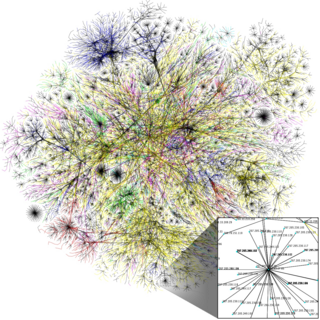 W
WThe Internet has a long history of turbulent relations, major maliciously designed disruptions, and other conflicts. This is a list of known and documented Internet, Usenet, virtual community and World Wide Web related conflicts, and of conflicts that touch on both offline and online worlds with possibly wider reaching implications.
 W
WA virtual dressing room is the online equivalent of an in-store changing room. It enables shoppers to try on clothes to check one or more of size, fit or style, but virtually rather than physically.
 W
WThe Web Index is a composite statistic designed and produced by the World Wide Web Foundation. It is the first multi-dimensional measure of the World Wide Web's contribution to development and human rights globally. It covers 86 countries as of 2014, the latest year for which the index has been compiled. It incorporates indicators that assess the areas of universal access, freedom and openness, relevant content, and empowerment, which indicate economic, social, and political effects of the Web.
 W
WWeb science is an emerging interdisciplinary field concerned with the study of large-scale socio-technical systems, particularly the World Wide Web. It considers the relationship between people and technology, the ways that society and technology co-constitute one another and the impact of this co-constitution on broader society. Web Science combines research from disciplines as diverse as sociology, computer science, economics, and mathematics.
 W
WWeb typography refers to the use of fonts on the World Wide Web. When HTML was first created, font faces and styles were controlled exclusively by the settings of each web browser. There was no mechanism for individual Web pages to control font display until Netscape introduced the font element in 1995, which was then standardized in the HTML 3.2 specification. However, the font specified by the font element had to be installed on the user's computer or a fallback font, such as a browser's default sans-serif or monospace font, would be used. The first Cascading Style Sheets specification was published in 1996 and provided the same capabilities.
 W
WA webcam is a video camera that feeds or streams an image or video in real time to or through a computer network, such as the Internet. Webcams are typically small cameras that sit on a desk, attach to a user's monitor, or are built into the hardware. Webcams can be used during a video chat session involving two or more people, with conversations that include live audio and video.
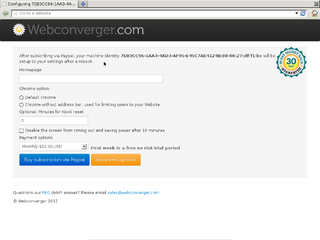 W
WWebconverger is a Linux-based operating system designed solely for accessing Web applications privately and securely. Based on the Debian distro, it is able to boot live from removable media like CD-ROM or USB flash drive but can also be installed to a local hard drive. Webconverger is pre-compiled to run on any x86 hardware. It does not have high system requirements and will also run on older machines.
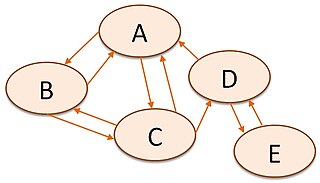 W
WThe science of webometrics tries to measure the World Wide Web to get knowledge about the number and types of hyperlinks, structure of the World Wide Web and using patterns. According to Björneborn and Ingwersen, the definition of webometrics is "the study of the quantitative aspects of the construction and use of information resources, structures and technologies on the Web drawing on bibliometric and informetric approaches." The term webometrics was first coined by Almind and Ingwersen (1997). A second definition of webometrics has also been introduced, "the study of web-based content with primarily quantitative methods for social science research goals using techniques that are not specific to one field of study", which emphasizes the development of applied methods for use in the wider social sciences. The purpose of this alternative definition was to help publicize appropriate methods outside of the information science discipline rather than to replace the original definition within information science.
 W
WWhen an HTTP client requests a URL that points to a directory structure instead of an actual web page within the directory structure, the web server will generally serve a default page, which is often referred to as a main or "index" page.
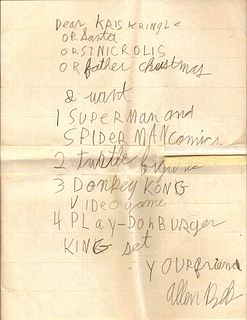 W
WA wish list, wishlist or want list is an itemization of goods or services that a person or organization desires. The author may distribute copies of their list to family, friends, and other stakeholders who are likely to purchase gifts for the would-be recipient or to offer some of the listed items for sale. The goal of a wish list is to facilitate communication between the gift receiver and the gift giver. Wish lists often contain items that a gift purchaser can obtain from a variety of retailers. Some wish lists are specialized for particular purposes or concentrated at individual retailers, such as gift registries.
 W
WYahoo! Inc. was an American multinational technology company headquartered in Sunnyvale, California. Yahoo was founded by Jerry Yang and David Filo in January 1994 and was incorporated on March 2, 1995. Yahoo was one of the pioneers of the early internet era in the 1990s. Marissa Mayer, a former Google executive, served as CEO and President of Yahoo until June 2017.
 W
WZeroNet is a decentralized web-like network of peer-to-peer users, created by Tamas Kocsis in 2015. Programming for the network is based in Budapest, Hungary; is built in Python; and is fully open source. Instead of having an IP address, sites are identified by a public key. The private key allows the owner of a site to sign and publish changes, which propagate through the network. Sites can be accessed through an ordinary web browser when using the ZeroNet application, which acts as a local webhost for such pages. In addition to using bitcoin cryptography, ZeroNet uses trackers from the BitTorrent network to negotiate connections between peers. ZeroNet is not anonymous by default, but it supports routing traffic through the Tor network.